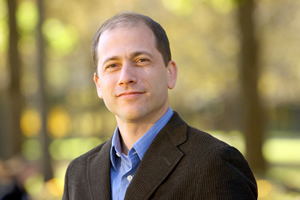Alternating current (AC) flows through all modern power grids. But ARDA Power, a startup that draws on research being done at U of T, is capitalizing on a renewed interest in direct current (DC) power transmission.
“Wind turbines and solar arrays output DC power,” says Peter Lehn, a U of T engineering professor specializing in energy systems and one of ARDA’s co-founders. “And many devices, including LED lighting, home electronics and even high-efficiency air conditioners and furnaces actually consume direct current as well.”
As long as electricity doesn’t have to travel too far, says Lehn, it makes no sense to generate direct current, convert it to AC for distribution, and then convert it back to DC for use.
The question of whether to use alternative or direct current to power homes and businesses dates back to more than a century ago, when North America lived through what’s known as the War of Currents.
Inventor Thomas Edison advocated DC power transmission, which was safer, but inefficient at moving electricity over long distances. He resoundingly lost that war to proponents of alternating current. AC power uses high-voltage wires to distribute electricity far and wide with minimal energy loss along the way.
ARDA’s idea is that when a big-box store such as Best Buy or Costco builds a new outlet, the retailer would add solar, wind or another power source on site, and outfit their shop with DC-based lighting, heating and so on. ARDA would supply the electronic interfaces to connect primary and backup power sources, storage batteries, energy-management technologies and all the other pieces necessary to provide the store with reliable, efficient and less expensive power. “Our prime market is big-box stores and commercial buildings,” says Lehn. “With a single building or a small cluster of buildings, DC microgrids offer greater efficiency and lower cost.”
Lehn says there’s work to be done educating potential customers and fostering a cultural shift that inspires companies to think beyond a century of AC dominance. He finds it encouraging that Bosch, a multinational technology company, is building a DC microgrid demonstration site in California, and he expects several other demo sites to be established over the next three years. ARDA itself is nearing completion of a demo site in Burlington, Ontario, where batteries, solar panels and a back-up natural gas-fired generator will supply DC energy to LED lighting systems and air conditioning.
“It’s exciting but challenging. We’re trying to create a new market space,” he says. “We need to make a compelling argument that will attract customers away from an ecosystem that may be inferior, but that they are comfortable with.”
Recent Posts
People Worry That AI Will Replace Workers. But It Could Make Some More Productive
These scholars say artificial intelligence could help reduce income inequality
A Sentinel for Global Health
AI is promising a better – and faster – way to monitor the world for emerging medical threats
The Age of Deception
AI is generating a disinformation arms race. The window to stop it may be closing





